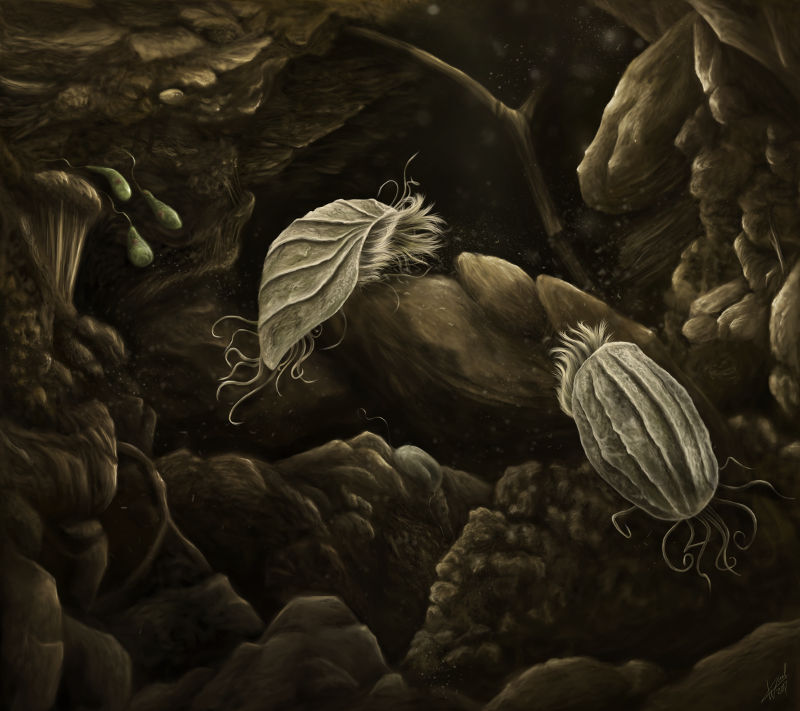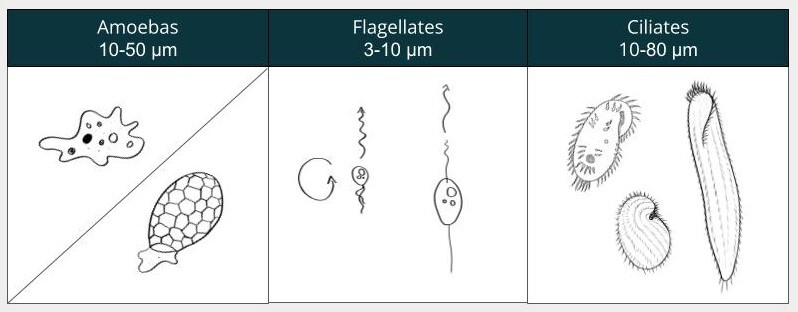
Ciliates
Protozoa are single-celled organisms. That means the entire organism is just one cell, whereas animals like us are made of trillions of cells of different types, each with specific jobs. Just like animals, protozoa have ecological roles as hunters, grazers, or prey. Some even partner with algae or use chloroplasts like plants to produce food for themselves using light. Protozoa are very common, and watching them in a microscope is almost as easy and just as much fun as birdwatching with binoculars. However, learning to recognize and name the different kinds of protozoa is a little more complicated.
Identifying protozoa to species or even genus is difficult and requires a lot of training, so instead they are often referred to using more general terms. Protozoa are divided into broad categories based on how they move; "flagellates", "ciliates", and "amoebas".

Ciliates and other protozoa are important, but often overlooked members of the soil food web. Not only do they contribute to nutrient cycling by consuming bacteria and other organisms, but they are picky eaters and their selective grazing can influence the bacterial community structure. Protozoa have also been found to provide many direct and indirect benefits to plants, improving their growth, health, and disease resistance even when nutrients are already in good supply.
This was one of the earliest protozoa drawings I did. The goal with these first drawings was primarily to make public microscope demonstrations more intriguing, but also just to have something I could point to when explaining what participants were looking for in the microscope. I found that scenes like this which feature organisms similar to those we had in the microscope helped participants connect more easily with what they saw. Because the microscope field has a bright background, there's no familiar environmental context to help the viewer understand where these organisms actually exist in nature, and that can be disorienting. The illustration acts as a bridge by providing a familiar soil environment as context for the unfamiliar organisms that look similar to those in the microscope.
If you like this artwork, you can order a print of it here or support me on Ko-fi. For inquiries about DIY prints, licensing, commissions, collaborations or just to share enthusiasm about microbes, please email post@mikroliv.no, or send me a message on Instagram. I love hearing from you!


